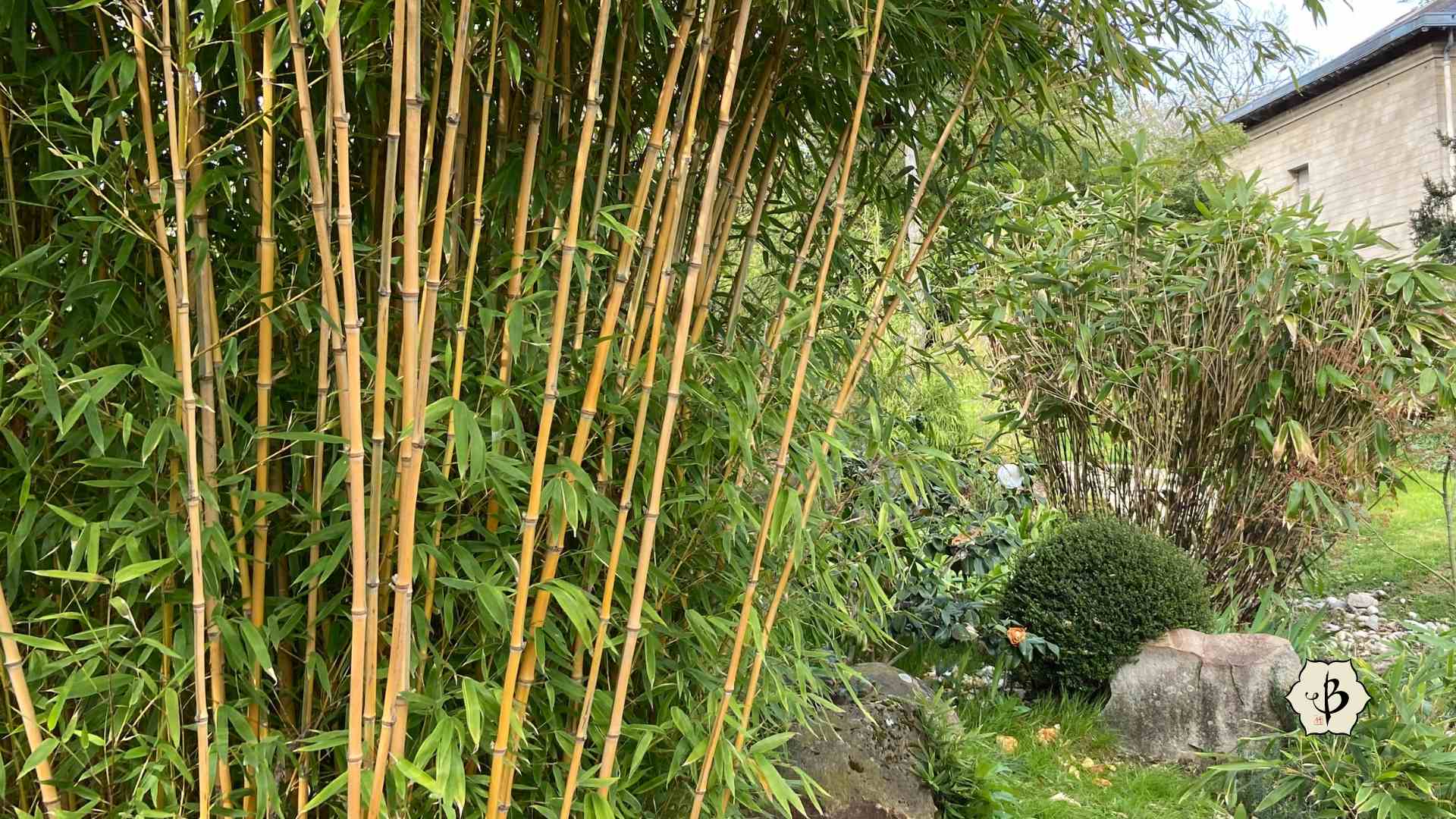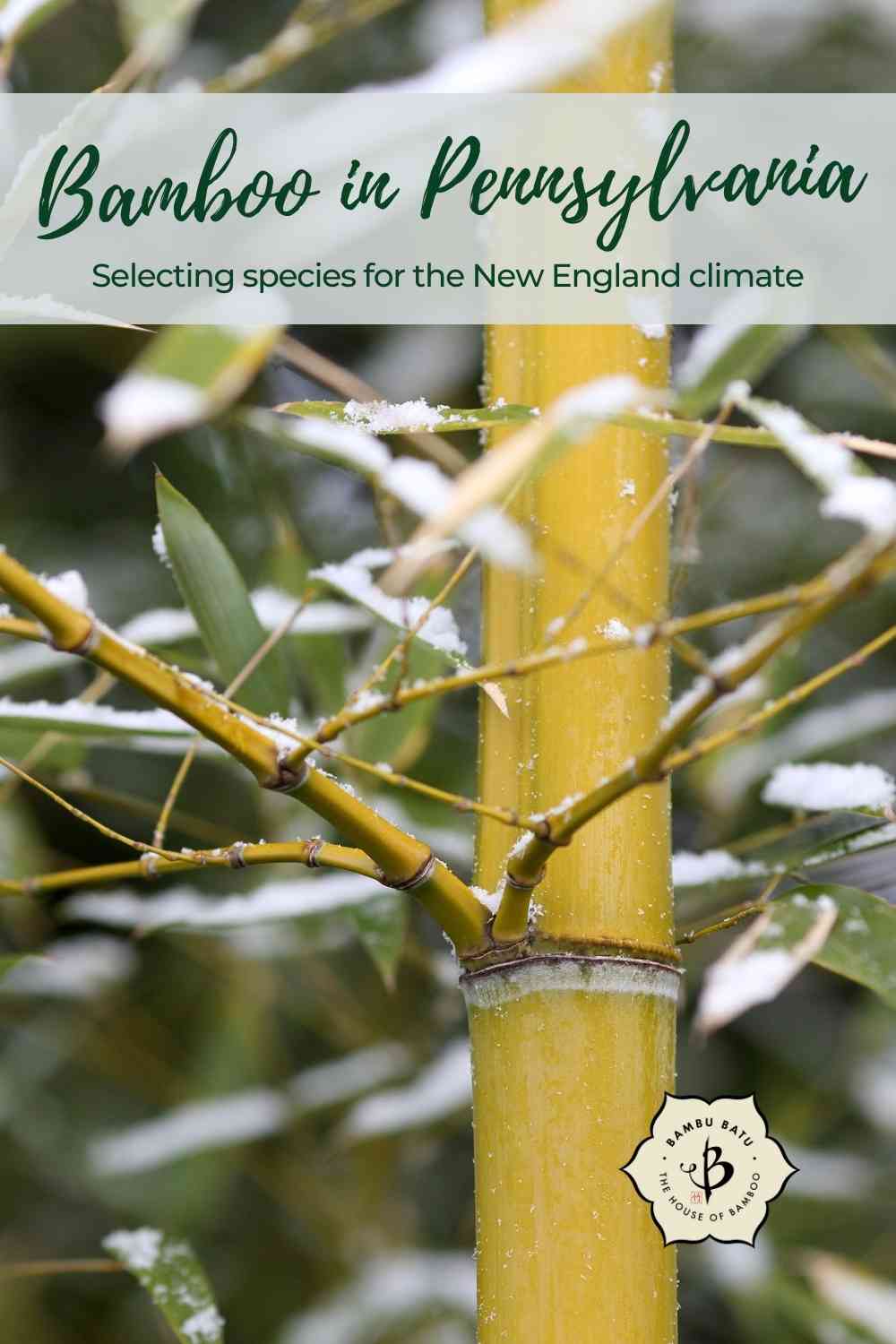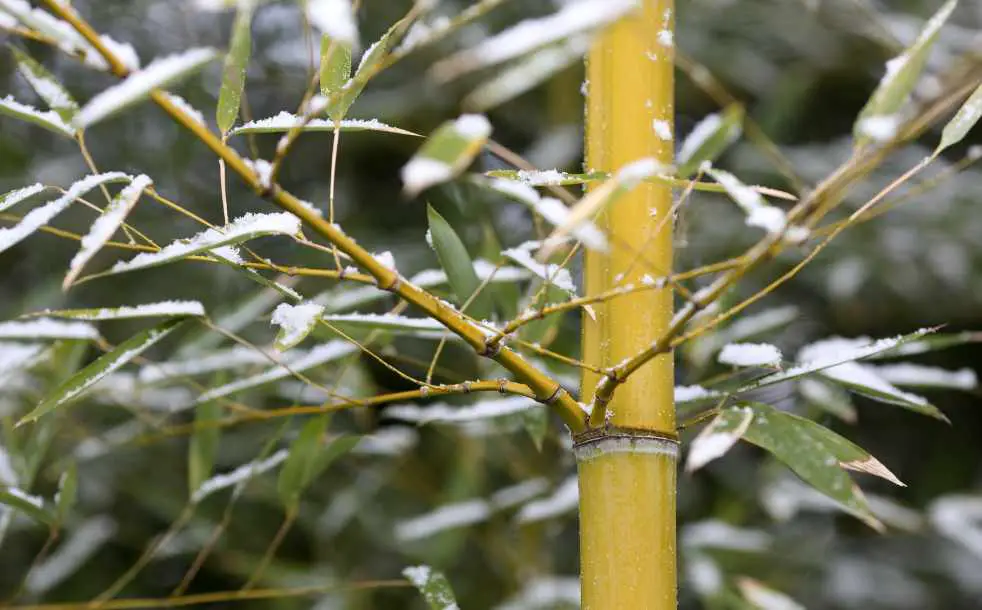Pennsylvania, New York, and New England, land of Liberty, home of the Patriots, and birthplace of the American experiment we call Democracy. The region is steeped in Colonial history, but one of the last places we would associate with bamboo. Even so, bamboo can survive virtually anywhere, including the Northeastern Seaboard. And with the popularity of bamboo rising faster than Franklin’s kite in a lightning storm, it’s no surprise to find gardeners in the Keystone State taking an interest in this vibrant grass.
There are no native species of bamboo north of the Ohio River Valley, yet many bamboo varieties can grow easily in the northeastern states. Most of Pennsylvania and New England are in USDA climate zones 6a and 6b, where winter temperatures typically fall to zero or even -10º F. Such weather rules out the possibility of growing tropical bamboo, but dozens of temperate bamboos can withstand conditions as cold as 10 or 20º below zero.
As we’ve had several residents of Pennsylvania contact us recently about growing bamboo in their home state, we decided it was time to address the topic in a blog. The following article — first published in October 2021 and most recently updated in January 2025 — offers some advice on growing bamboo in that part of the country, including a list of suitable species.

Bamboo in Different Climates
Bamboo is an amazing and fascinating plant. But when we say bamboo, we’re really talking about a subfamily of grasses that includes nearly 100 genera and about 1,500 different species.
Many of these bamboo species come from tropical areas, close to the equator. Indonesia, the Philippines, and the Amazon Rainforest are famous for their fabulous bamboo varieties. And these tropical bamboos will not survive winters with deep or prolonged freezing.
At the same time, there are hundreds of species of temperate bamboo, native to northern latitudes and mountainous elevations, and well-accustomed to the snow. Plenty of bamboo species can survive sub-zero temperatures, and some are even hardy down to -20º F.
A handful of bamboo species are even native to North America, especially common in places like Georgia, Texas and Kentucky. The genus Arundinaria grows widely throughout the Deep South and all the way up to the Ohio River Valley. But they don’t quite reach Pennsylvania.

Growing conditions in Pennsylvania and New England
Up here in the northeastern states, we are looking at USDA climate zones 6a and 6b, drifting into zones 5a and 5b as we move into northern Pennsylvania and Upstate New York. That means, in zone 6, extreme low temperatures of 5 or 10º below zero.
Moving up into zone 5, you can expect the mercury to drop to -15 or -20º in the coldest winters. The options get fewer and further between, the farther north you go. But even in Canada, there are a handful of hardy candidates for the determined bamboo grower.
Unlike the foothills of the Himalayas, where some cold-loving bamboo comes from, the East Coast also has some very hot summers, with temperatures climbing into the 90s. The trick then is to find bamboo species that can tolerate both the freezing winters and the hot summers.
If you’re looking for an unforgettable bamboo experience on the Northeastern Seaboard, you’ll want to pay a visit to the bamboo forest at Rutgers Garden in New Brunswick, New Jersey. Originally created as a welter shelter for honeybees, this extensive grove of Phyllostachys nuda keeps green all winter long, even as temperatures drop well below zero. The gardening crew harvests the aging poles after about 5 to 7 years, ensuring that the bamboo always looks its very best.

Tips for growing bamboo in Pennsylvania and New England
Before we get to the species list, here are a few things to keep in mind when growing bamboo in the Northeast.
- Running or Clumping: One of the first things to understand about bamboo is the difference between runners and clumpers. Runners have roots that spread, sometimes pretty aggressively. Without a proper containment strategy, these grasses can get out of control or become a nuisance. Plan accordingly, because MOST temperate bamboos are runners. Clumping bamboo species are usually tropical, and they tend to stay pretty self-contained. Many gardeners prefer the peace of mind offered by clumping bamboo.
- Weather extremes: There are tropical bamboos that can handle the heat but not the cold, and there are some cool-weather bamboos (like genus Chimonobambusa and Himalayacalamus) that tolerate winter freezing but not summer heatwaves in the 90s.
- Preparing your bamboo for winter: To protect your bamboo and insulate its roots in the winter, it’s a good idea to mulch generously in the fall. Mulch provides a blanket in the winter and also helps the soil retain moisture in the dry season. With time, the mulch breaks down and helps to fortify the topsoil.
- Portable bamboo: Some gardeners like to keep their bamboo in pots or containers. This makes it easier to bring the bamboo into the garage or a greenhouse when there’s an extreme cold snap. Generally, however, the roots will stay warmer and happier when the bamboo grows directly in the earth.
- Bamboo removal: If you’re looking to remove unwanted bamboo, reach out to CC Bamboo, leaders in bamboo removal.

Cold-Hardy Bamboo Species for New England and the Northeast
Cold hardy runners
Like the early American Colonists who demonstrated in the Boston Harbor or gathered in Philadelphia in 1776, these Phyllostachys species crave freedom. As a gardener, you’ll need to impose order on these rebellious rhizomes. One of the best ways to defend your land is by digging a trench.
- Phyllostachys aureosulcata: The “yellow groove bamboo” is easily recognizable for the yellow stripe that’s visible on the dark green culms. A subspecies known as “crookstem bamboo” has shoots that sometimes grow in a zig-zag manner. This visually interesting and attractive variety can grow up to nearly 50 feet in height, even in freezing temperatures. But in zones where it regularly gets below -10 or 15º F, it probably won’t grow more than 10 feet tall.
- Phyllostachys heteroclada f. solida: This cultivar of “water bamboo” is commonly known as “solid bamboo”, and is especially popular as a hedge, growing 10 to 15 feet tall. It’s one of the few varieties that actually has a solid stem, rather than being hollow inside. And as the name tells you, this is one of the best bamboo varieties for very wet soil. This subspecies is also a bit more cold-resistant than ordinary water bamboo, hardy down to -10º F.
- Phyllostachys bissetii: Very dense growing, with a thick bushy canopy, and very cold hardy. The one-inch shoots will grow up to about 20 feet in height. Cold hardy to at least -10º F, even down to -25º with proper mulching.
- Phyllostachys nuda: A very attractive and cold hardy species, its shoots get 1-2 inches in diameter and 25-30 feet in height. Young shoots appear very dark, almost black, turning a rich, dark green as they mature, usually with pretty, white rings around the culm nodes.
- Phyllostachys atrovaginata: Popularly known as “incense bamboo”, this variety has a waxy coat that gives the culms a very pleasant fragrance in hot weather or when rubbed. Many gardeners appreciate how fast this bamboo grows, with thick culms of 3 inches or more in diameter and up to about 40 feet in height. Good at temperatures as low as -10 or 15º F.
- Phyllostachys parvifolia: Like water bamboo, the rhizomes of this species are well adapted for wet and saturated soil. Small leaves make the thick, dark green culms stand out, and the white rings around the nodes give them even more character. Fresh shoots of this variety are reputed to be delicious in flavor. Mature shoots can get up to 40 feet tall, and it is cold hardy down to -15º F.

Cold hardy clumpers
The genus Fargesia is a fascinating class of bamboo. Unlike the vast majority of clumping bamboo, these are temperate species, very cold-hardy, perhaps the most cold-hardy of any bamboo. Native to the mountains, they are not very tolerant of hot weather.
So if you’re growing these in areas where summer temperatures exceed 80 degrees, be sure to give them plenty of water. They also like more shade, especially when it gets hot. Consider planting under some deciduous trees, where there’s sun in the winter but shade in the summer.

- Fargesia murielae: Commonly known as “umbrella bamboo”, many consider this to be among the most beautiful varieties for cultivation. New shoots have a light blue hue, turning dark green and yellow with age. Growing this bamboo in a shady area will help preserve the rich blue shade. Thin shoots will get about 12 feet tall, and it’s hardy down to -20º F.
- Fargesia nitida: “Blue fountain bamboo” earned its name from the dark purple, bluish culms and the thick, cascading canopy of foliage. One-inch poles can get to about 15 feet tall, and thrive in temperatures as low as -20º F.
- Fargesia dracocephala: “Dragon head bamboo” has thick culms growing to about 10 feet, with a thick, weeping leaf canopy that can provide a good privacy hedge. Not recommended for hot, humid climates, but cold hardy down to -10º F.
- Fargesia rufa: A compact, thick and bushy variety, Rufa much prefers the cooler climates, and also does well in partial shade, protected from afternoon sun. This species is hardy down to -15º F. Thin culms grow to about 10 feet tall.
- Fargesia sp. ‘Jiuzhaigou’: This species includes many interesting and cold hardy cultivars, including “red dragon” and “black cherry”. As the names suggest, these are some more colorful varietals. With thin culms growing to around 10 feet, this is a more compact species of bamboo, but cold hardy down to -20º F.

Bamboo: The Grass of Patriots
If you’re a fan and a zealot and interested in growing bamboo in Pennsylvania, New England, and other portions of the Northeastern Seaboard, you may find the following articles especially helpful. Our website is filled with useful facts on gardening with bamboo, so take some time and have a look around.
- Laws against bamboo in Pennsylvania
- Bamboo in Colorado
- Growing bamboo in zones 7 and 8
- Best tools for gardening with bamboo



























Do you have any information on harvesting, and eating northern grown bamboo? Most videos are on the 6″ diameter tropical varieties. I have a cold hardy variety (not sure which) that is a runner and grows well in central Pa. I read that all bamboo are edible. So can my 1 inch thick variety be harvested? What amount do you cull out. 50% new growth? More or less? Thank you on any information you can provide. Mike
Yes, it’s 95% likely to be a Phyllostachys species, all of which are edible. Harvest within the first 1-2 weeks of sprouting, cut it close to the rhizome, just below the soil. Boil them first before eating. Bon apetit!
Hello Fred
We have a three acre property on Cape Cod in Massachusetts.
Very interested in using bamboo as a border around the property line as our neighbors have done.
We own a trencher and excavator.
Would like to purchase bamboo that is a mature plant.
Look forward to hearing from you!
Jim and Amy Costa
Check out our articles on hedge bamboo and bamboo nurseries. We don’t sell plants.